This is a very basic question that i would like to understand.
I am running Fresh Apache tomcat server on port 8080, and when i type URL http://localhost:8080, i see that browser sends following request to tomcat.
GET / HTTP/1.1
Host: localhost:8080
Connection: keep-alive
Cache-Control: max-age=0
Accept: text/html,application/xhtml+xml,application/xml;q=0.9,image/webp,*/*;q=0.8
User-Agent: Mozilla/5.0 (Windows NT 6.1; WOW64) AppleWebKit/537.36 (KHTML, like Gecko) Chrome/35.0.1916.114 Safari/537.36
Accept-Encoding: gzip,deflate,sdch
Accept-Language: en-US,en;q=0.8
I see the below http response with Content-type:text/html

My question:
1) How / parameter of GET request mapped to this above html page as response at tomcat side, when tomcat server received this GET request? Is this something to do with below xml element in tomcat/conf/web.xml? What is the flow on tomcat side after receiving this request?
<!-- The mapping for the default servlet -->
<servlet-mapping>
<servlet-name>default</servlet-name>
<url-pattern>/</url-pattern>
</servlet-mapping>